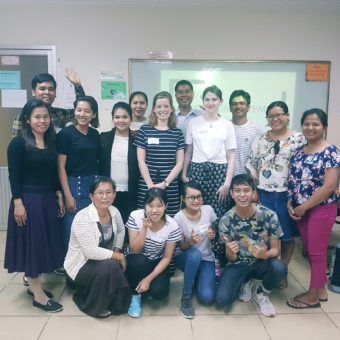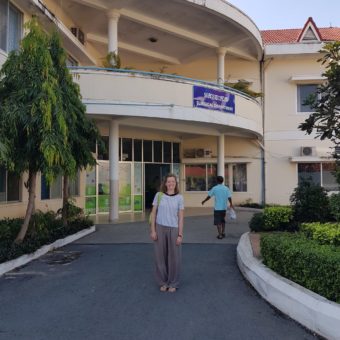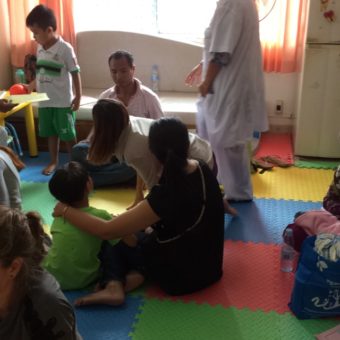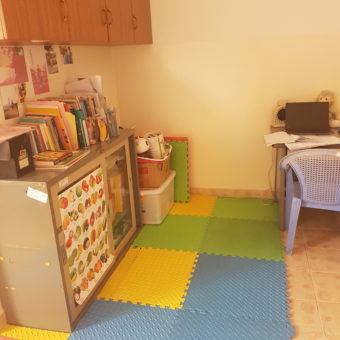
City Cambodia Project 2017: Weeks 4 & 5
Sous-dey from Cambodia! We are Caitlin and Helena and we are Speech and Language Therapists from City, University of London. We represent the cleft team as part of the City-Cambodia Project 2017. We are living and volunteering in various hospitals in Phnom Penh for the next three months.
Our Mission Statement is: to establish local expertise by empowering local staff to offer basic speech and language services within a multi-disciplinary context, with the aim to improve quality of life and social inclusion for people with speech and language difficulties
Week 4
On Monday we did our first training session at CSC. We taught Vin about the anatomy and physiology of the speech system. We also began to teach her about speech sound production. We introduced voice, place of articulation and did some ear training. Vin also taught us how to correctly produce Khmer sounds. After training, we saw four patients; two newborn babies with cleft lip and palate, one newborn with cleft palate and one child with cleft palate repair. During session we observed how Samnang and Vin run sessions and offered further advice when necessary. At the end of the day we got to see the new and finished operating theatre which was very impressive.
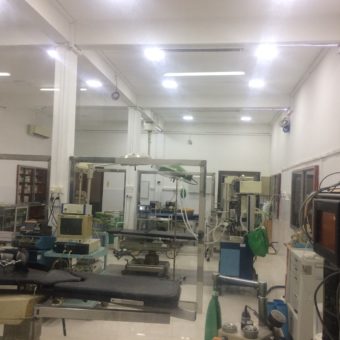
On Tuesday morning we created a training presentation on voice, place and manner to teach Vin about speech production in more detail. The speech therapy room at CSC doubles as an audiology room and Vin also assists the audiology team with hearing assessment. As there were audiology patients to be seen we did not get a chance to do the training on that day. However we managed to design a case-history form for Samnang and Vin to use. At the end of the day we saw a child with a repaired cleft lip and palate and had the opportunity to model using the new case-history form.
On Thursday we visited Khmer Soviet-Friendship Hospital (KSFH) where we met up with Smile Cambodia. After spending time navigating around the hospital we eventually found the office where we had a meeting to discuss the work we will be doing with them. Unfortunately, as there is no one for us to train up as a speech advisor the work we can do with them is limited. This project aims to empower staff to continue the speech therapy work once we have left and if there is no one to train, nothing we do will be sustainable. They understood this and informed us that they will let us know if they employ a speech advisor. However Smile Cambodia run regular missions around Cambodia where they repair facial abnormalities such as cleft lip and palate. The missions consist of patients and their families going around to each relevant professional and receiving advice. They rely on volunteers and we have offered to join them one of these in order to add a speech and feeding advice component to the mission. We are waiting to hear back on the outcome of this. During our visit to KSFH it rained like we have never seen rain before. This made our exit from the hospital very interesting and consisted of us taking our shoes off, rolling our trousers up above our knees and wading through the newly formed river to reach the road.
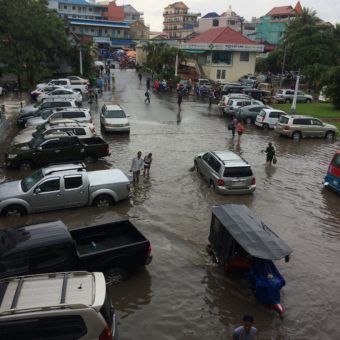
On Friday we joined speech advisor Dr Alin in her feeding clinic at National Paediatric Hospital (NPH). The feeding clinic consisted of advice-giving by Dr Alin and the surgeon, Dr Vanna. This was all done within the same room and patients came through with their families, speaking first with Dr Vanna and then with Dr Alin. It was very fast-paced and more than 20 patients were seen in the space of five hours. We were very impressed and encouraged by Dr Alin’s knowledge on feeding advice. Once the clinic had finished, we met up with Brazilian occupational therapist, Raphael, and his three Australian students who are also working in NPH. We discussed how we can encourage the hospital and all disciplines to do joint working and communicate effectively with one another. Part of our job is to raise awareness of other disciplines and on the benefits of sharing information between professionals. In Cambodia, there is not a health care council which has caused progress notes and goal-setting to be almost non-existent. Raphael expressed interest in having us give training to occupational therapists and physiotherapists on the importance of record-keeping.
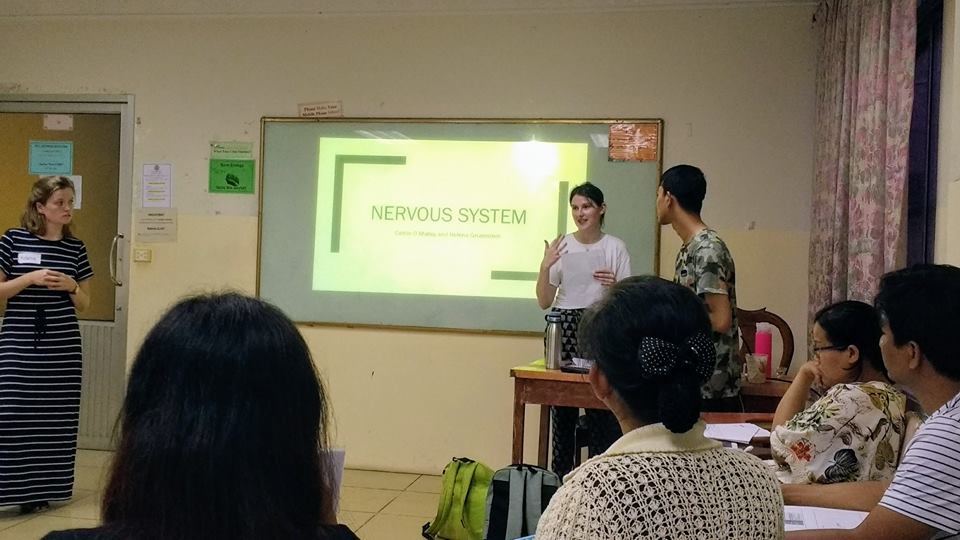
Saturday was not a day of rest for us, but was exciting as we had our first experience of lecturing at Paññāsāstra University. We gave two lectures with a short break in between. The first lecture was on The Brain and the second one was on The Nervous System. We had a lot of fun giving the lectures and the group were very enthusiastic and lovely to teach. This was also our first experience of working with an interpreter, Socheat, who ensured that our material was fully understood. This was valuable practice as a lot of our work out here will involve working with interpreters. We really enjoyed lecturing and this was a great end to the week!
Week 5
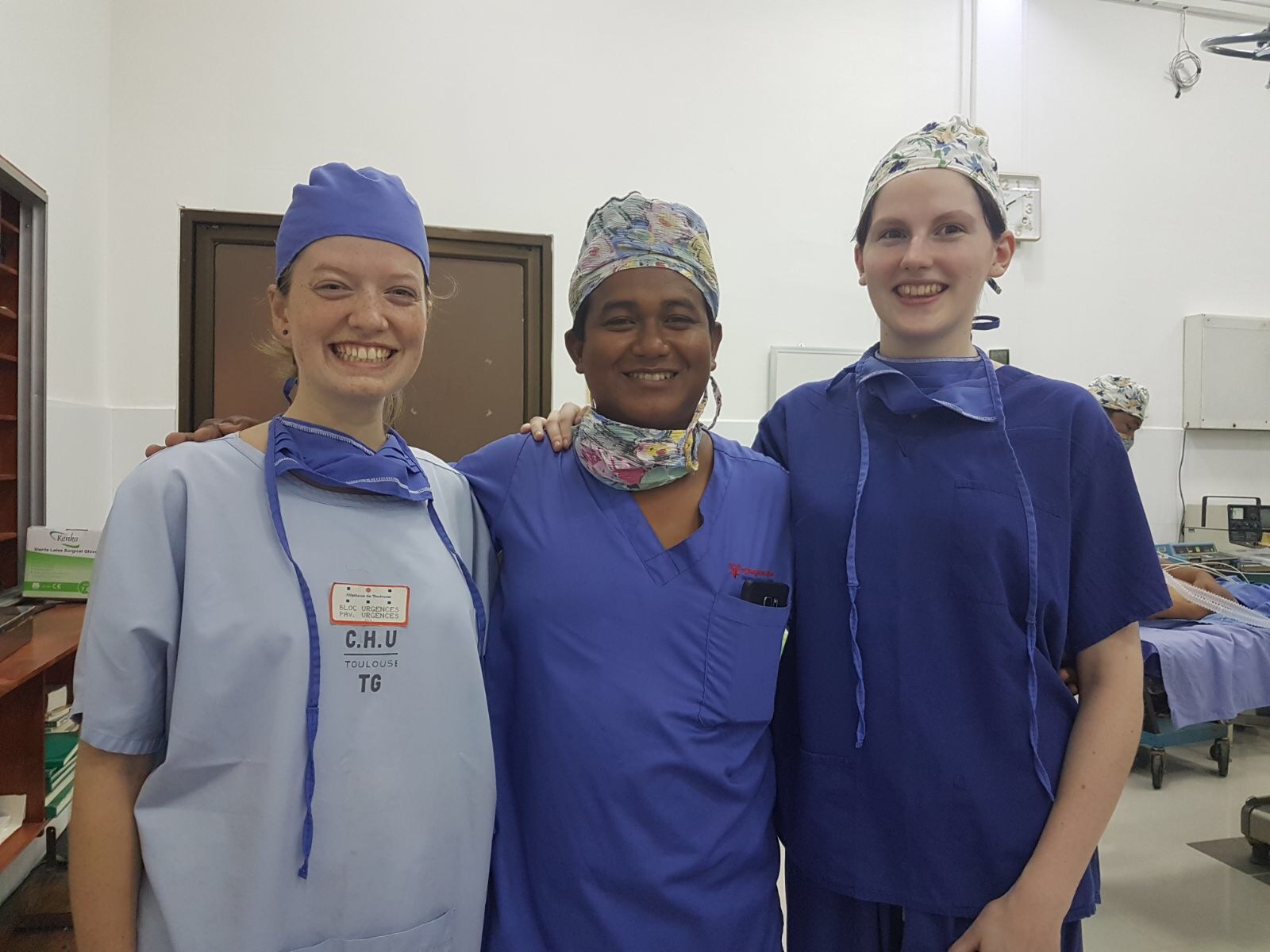
This week we felt like we had gotten more into the swing of things. On Monday we re-capped on the anatomy and physiology training with Vin. We were impressed with how much she remembered from the week before and how quickly she picked up extra bits that we added in. After this we began some training on the voice, place and manner of speech sounds. We taught her about how to differentiate between voiced and voiceless sounds by feeling her larynx while producing the sounds. We also looked at how the articulators work together to determine the places of the sounds. While teaching Vin about the principles behind sound production, we are also having to do a lot of learning ourselves as there are many sounds in Khmer that we do not produce in English. It makes for entertaining training sessions where we tell Vin about how the sounds are produced and she laughs at us while we continuously practice pronouncing the sounds.
This was a busy day as lots of staff were at a conference, meaning that Samnang was only around to see speech patients in the afternoon. At CSC, families sit and wait to be seen by professionals and because there is no appointment system in place and no set session lengths, they often have to wait for the whole day before being seen. It was only after attempting to take 4 detailed case histories within 3 hours that we realized the full impact of this. We have become aware that as much as we would like to introduce a full case history to capture the whole picture of the child, it is not feasible in this setting. We now need to figure out how to gather all relevant information from a patient in a shorter amount of time than we are used to back in the UK. We enjoyed the fast-paced afternoon and got to model a short receptive language screen and show the importance of observing the play and communication of children rather than simply relying on parental reports.
In the evening all eight of us volunteers had our first Khmer language lesson with teacher Meng. We learnt about introductions and greetings. Our favourite phrase this week was, ‘Neak chmore ay?’- ‘What is your name?’. Mr Meng has a very vibrant character and encouraged everyone to practise pronouncing all the phrases. He will come to our house every week for the time that we are out here.
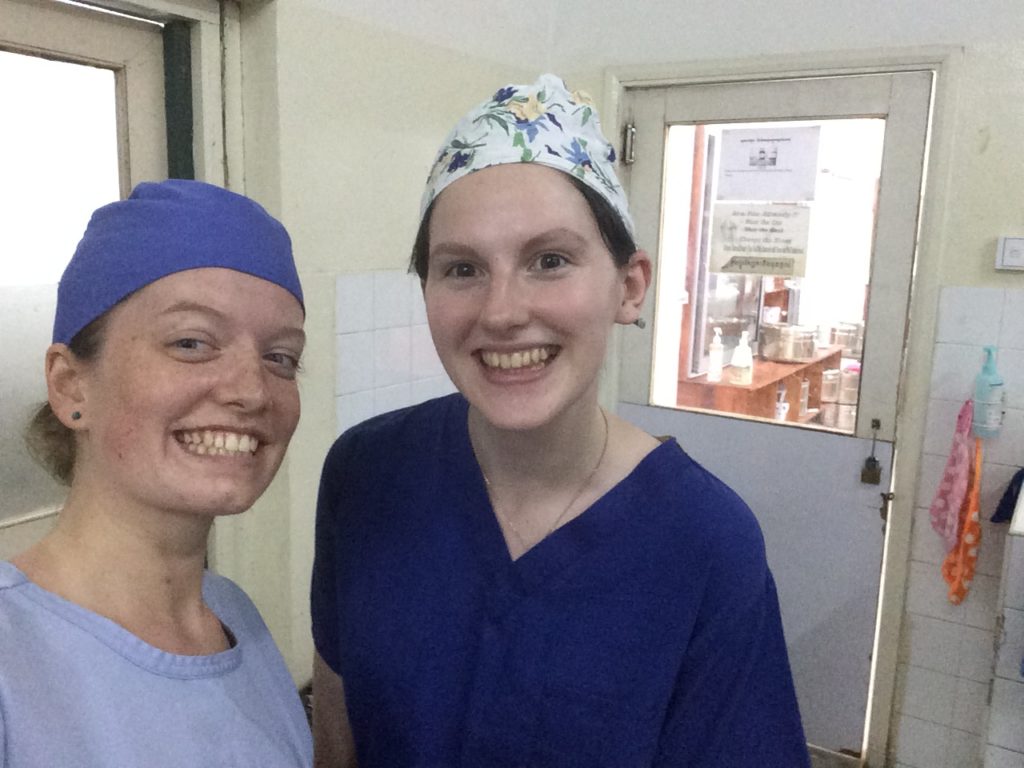
On Tuesday during the morning meeting, we gave a presentation about ourselves and the City-Cambodia project as this had been postponed until this point. After the morning meeting, we got the opportunity to scrub in on cleft palate repair surgery. Dr Vanna, the CSC surgeon, spent time pointing out the anatomy during the surgery. He is a specialist in cleft lip and palate repair and made the complex surgery look simple. This was an interesting experience and we gained invaluable knowledge. Unfortunately, while Caitlin’s brain wanted to be there, her body told her otherwise. Due to feeling slightly faint and nauseous, Caitlin took two breaks from watching the surgery. In the afternoon, Helena scrubbed into a second cleft palate repair surgery while Caitlin started to design a new record form for the Khmer Assessment of Speech Sounds (KASS), which was created and updated by City-Cambodia 2012, 2013 and 2016.
On Wednesday we attended Dr Alin’s speech clinic for the first time. This was a very collaborative morning where we all worked together to assess patients’ speech. During this clinic there were two patients with hearing impairments and Dr Alin was very interested to learn about audiograms and how they help to determine which speech sounds cannot be heard depending on the hearing loss of the patient. Wednesday clinics are slower-paced than Friday clinics at NPH which allows Dr Alin to spend time giving speech therapy and assessments to child. Dr Alin expressed interest in extending these clinics to include language assessments and therapy so this is a possible area for training.
In the afternoon we went to One-2-One Cambodia where we met Dr Puth and his team. They were a very friendly team and enthusiastic about us working with them. One-2-One Cambodia visit slums in and around Phnom Penh raising awareness and offering services to underprivileged families. In the team there are doctors and nurses who provide families with medical advice and where needed provide free transportation to local hospitals where they are provided with vaccinations for no cost. Last year they received an eight week training course from City-Cambodia 2016 and this year they have asked for a refresher course and more practical training. We have offered to give an afternoon of training each week and then spend half a day in the slums with them which will give us a chance to show theory in practice.
Thursday was our administration day so we completed the KASS record sheet and created an informal receptive language screen.
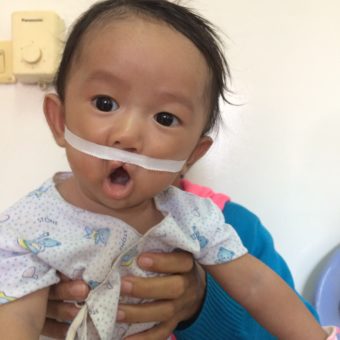
On Friday morning it was back to NPH for Dr Alin’s feeding clinic. Once again we were amazed by how busy it was (twenty-three patients in total!) and both Dr Alin and Dr Vanna’s professionalism and efficiency with each case that came in. The patients we saw today included a three week old baby with complete bilateral cleft lip and palate plus alveolus, a very energetic five year old boy with suspected social communication difficulties and a baby with a nasoalveolar mould (NAM). The NAM is something we hadn’t seen before this clinic. It is a non-surgical way to re-shape the gums, lips and nostrils with a plastic plate before cleft lip and palate surgery. During the clinic we had a few opportunities to informally assess some of the children’s speech and resonance by listening to them count from one to ten and getting them to produce sounds such as “ba ba ba” and “mi mi mi”. When the clinic finished, we went for lunch with Dr Alin. It was nice to have a non-work related chat with her and get to know her outside of the clinic.
Overall it has been a busy productive week and very enjoyable. It has been great getting to know all of the staff in our settings a bit better and becoming more hands-on in our work. We have come to the weekend tired but satisfied and look forward to getting back into it on Monday once we have had a rest.
